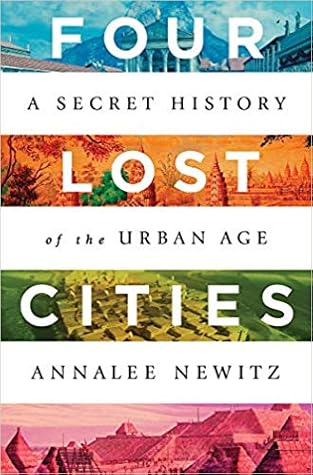More on this book
Community
Kindle Notes & Highlights
The myth of the lost city obscures the reality of how people destroy their civilizations.
Creating cities was in many ways about organizing labor, whether by force or by enticement. Usually it was a combination of both.
people needed a quick, easy way to identify themselves, along with their affiliations. That’s why the people of Çatalhöyük and nearby settlements began to carry small, decorated clay tokens that archaeologists call stamps. Usually a stamp was roughly the size of a business card, with an image in relief on one side.
People left the East Mound over centuries, and then the West. But as people abandoned the West Mound, he said, the empty land around Çatalhöyük came to life with new communities. “The Konya Plain fills with sites. It’s as if Çatalhöyük proliferates into other settlements on the plain, and the West Mound is just one. You could see it as a population explosion,”
That’s the difficult part about studying cities: they are not static entities that remain the same over time before suddenly disappearing into nothingness. At any given moment, they are a composite of many social groups, who likely view city life in different ways.
This forms the essence of historian Joseph A. Tainter’s grand theory in his influential book The Collapse of Complex Societies.14 He argues that most societies lose their cohesion when people get “declining marginal returns” on their investment in a city’s physical and social infrastructure.
“When you live in a city, the walls of other people’s houses will fall on you. Stuff accumulates in the street that will affect you. You take on a lot of extra work. Çatalhöyük was an attractive investment for many generations, and then it stopped being enough of an attraction to make up for it going downhill.”
Pompeiians sought out cities very similar to the one they had lost, and Vesuvius’ refugees were able to maintain continuity in their lives despite losing almost everything. This was largely because Rome had colonized the entire area, creating public spaces that were in some ways interchangeable.
When regions are hit repeatedly by storms, he told me, “no matter how wealthy a country is … they never quite make it back to baseline GDP.” Repairing the infrastructure is so expensive that it’s impossible to return to their previous economic baseline. And with each subsequent storm, their GDP is eroded even more. He calls this “sandcastle depreciation,”13 and noted that any civilization, no matter what level it is at, will slowly melt away under this repeated onslaught.
Despite what many popular accounts will tell you, this is not when the city “fell.” The upper classes had abandoned it, and taken their rules about debt slavery with them. Artists, priests, and dancers left for other cities, some in Ayutthaya. But the city’s laboring classes stayed. Evans pointed out that people at Angkor in the 15th century repaired a major bridge by reusing stones from a 14th-century temple.
the year is 2066. saint louisans are roofing their dwellings with stainless steel panels ripped off the gateway arch
As Angkor’s population left in what archaeologists call an urban diaspora, they returned to village life centered around Theravada Buddhist pagodas. There are parallels here to Çatalhöyük, whose people scattered from a dense urban core into small villages on the Konya Plain. Stark writes that the Lower Mekong Basin filled with a “rural agrarian system of hamlets and small towns whose farmers and artisans continued to pursue their livelihoods: perhaps with less direct state intervention.” What collapsed wasn’t Angkorian civilization, but “the political and urban core of an elite.”16
And then there were the shows. A cross between theater and ritual, these spectacles focused on stories of fertility and renewal, as well as tales of heroes and gods.11 We can’t be sure if people attending them were experiencing something that medieval Europeans would have called church, or something that contemporary Americans would call a Star Wars movie. Most likely, it was a bit of both,
Human sacrifices were no more out of the ordinary to Cahokians than the grisly executions of infidels were to their contemporaries in Europe. In both Europe and the Americas at this time, sacrifice was a public spectacle, used to solidify social norms and hierarchies. In European countries, executions in the town square were a way for rulers to show their power and purge their enemies. Centuries after the Cahokians stopped engaging in human sacrifice, England’s King Henry VIII was famous for publicly executing his advisers as well as two of his wives. Early European settlers in the Americas
...more
By the 1970s, archaeologists and urban historians had accumulated loads of evidence that urban civilizations have no set developmental pattern. Plenty of cities, including Angkor and Cahokia, are organized around nonmarket principles. Metropolitan areas expand and contract with waves of immigration over time. When a city’s population breaks apart into smaller villages, that isn’t a failure. It’s simply a transformation, often based on sound survival strategies. The culture of that city lives on in the traditions of people whose ancestors lived there, many of whom will go on to build new cities
...more
Though nearly every generation believes it’s living through the end times, there has never been a great civilizational collapse from which we didn’t return. Instead, there has been only the long road of transformation, each generation handing off its unfinished projects to the next.


